International 14
Class contact information.
Click below
Class Email
Class Website
One-Design Class Type: Dinghy, Foiling
Was this boat built to be sailed by youth or adults? Adult
Approximately how many class members do you have? 50
Photo Credit:Rockskipper
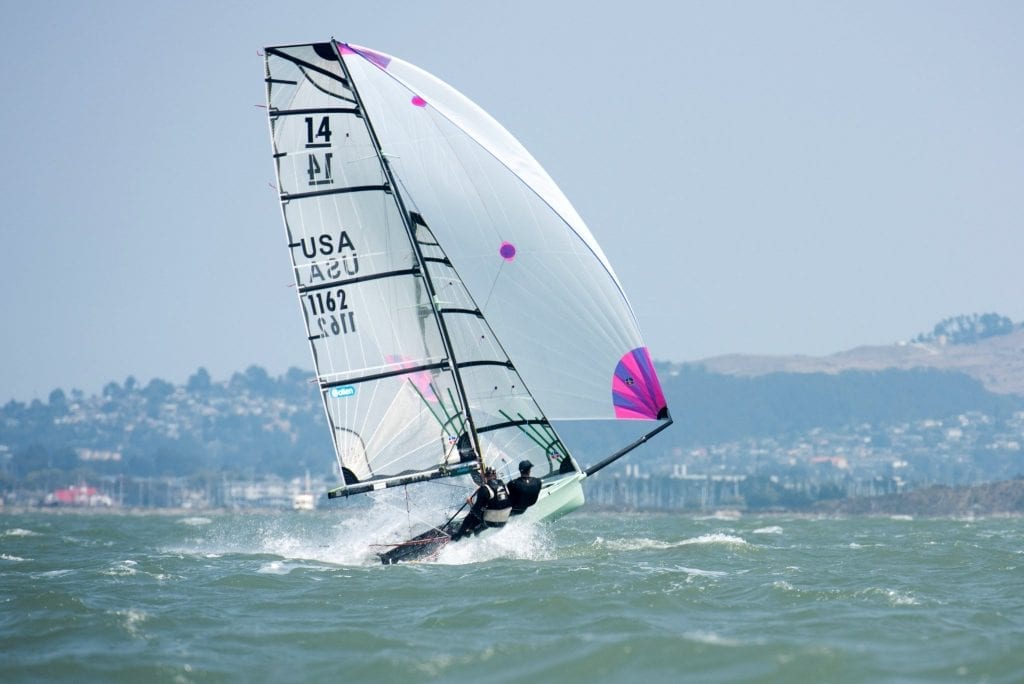
Photo Credit: Lindsay Preece
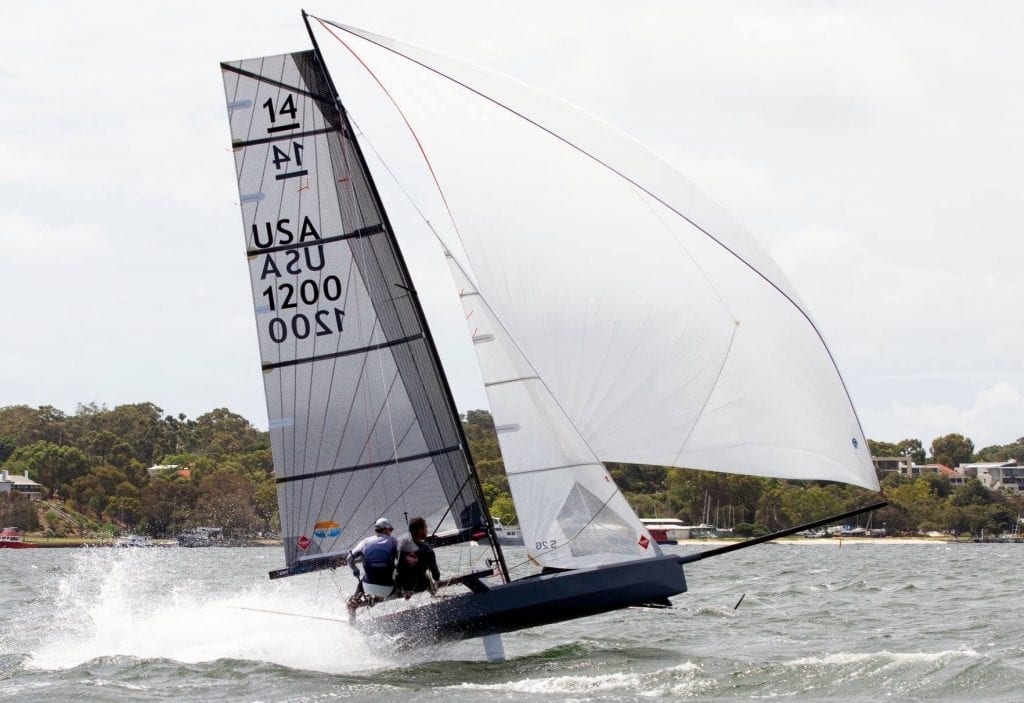
Photo Credit:
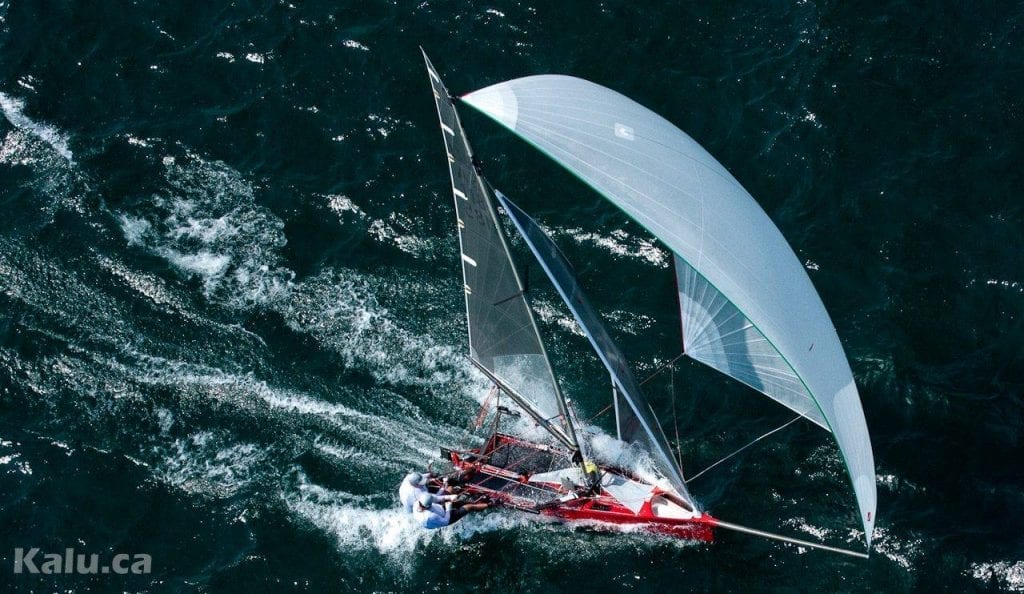

About International 14
The International Fourteen is one of the world’s premier sailing classes. It is a two-person, two trapeze skiff, with an unlimited area asymmetric spinnaker and 200 square feet of combined mainsail and headsail area. Carbon hulls and carbon rigs, with square-head mainsails, and foiling rudders, provide exceptional performance. While the relatively open class rules leave plenty of room for experiment, encouraging innovation. The Fourteen is for sailors looking for a fast, challenging boat in which they can develop their own ideas while sailing in the company of a group of like-minded, open and welcoming competitors.
The Fourteen is the oldest International dinghy class, having been granted the status by the then IYRU in 1928. Yet the roots of the class go back even further, to the sailing of various 14 foot dinghies/skiffs in various locations around the world in the late 1800’s. This gives the class its fantastic sense of history – and to sail a Fourteen has always been to sail something special.
Despite the history, the development nature of the class means that the boats themselves have always been at or near the forefront of small boat technology. While International status has meant that the class has played a key role in spreading ideas worldwide. Over the years, the Fourteen has been a major driver of both the development, and international adoption, of new ideas affecting all aspects of dinghy/skiff design.
Today the Fourteen is one of the most challenging, exciting, technical and ultimately satisfying boats to sail. Fourteens, the class saying goes, are forever; once you’ve tried one, no other boat will be quite the same.
Boats Produced: 1000’s of International 14’s have been produced since the boats inception 100 years ago, with 100’s of modern rules boats available in North America and worldwide
Class boat builder(s):
Henderson Boat Company: https://www.facebook.com/HendersonBoatCompany Ovington Boats: https://www.ovingtonboats.com/shop/international-78.html Composite Craft: https://www.compositecraft.co.uk
Approximately how many boats are in the USA/North America? 100+
Where is your One-Design class typically sailed in the USA? List regions of the country:
CA: San Diego, Long Beach, Cabrillo Beach, Santa Barbara, San Francisco Bay (Richmond); PNW: Columbia River Gorge, Seattle; Kaneohe Bay, HI. Smaller fleets in Ohio & Minnesota
Does this class have a spinnaker or gennaker? Yes
How many people sail as a crew including the helm? 2
Ideal combined weight of range of crew: No ideal weights: typically teams range from 350-380 lbs total: however lighter crews can utilize flatter sails, heavier crews fuller sails.
Portsmouth Yardstick Rating: 780
Boat Designed in The International 14 is a box design rule that’s evolved over the years. First designed in 1928, the rule has evolved to always be on the leading edge of sailing and boat building technology.
Length (feet/inches): 14 foot hull length
Beam: 6 feet at the widest point including hiking racks.
Weight of rigged boat without sails: Minimum hull weight is 70kg (154.3 lb), without mast and foils. There is no minimum weight for masts, rigging, or foils
Draft: Typically 6′ with board down. Open design rule allows for variance.
Mast Height: 25′ .02″
Back to One-Design Central
Copyright ©2018-2024 United States Sailing Association. All rights reserved. US Sailing is a 501(c)3 organization. Website designed & developed by Design Principles, Inc. -->
International 14
INT 14 AT A GLANCE
A HIGH-PERFORMANCE DEVELOPMENT SKIFF
The International 14 is a 14 foot twin trapeze racing dinghy sailed in many countries around the world. It is a development class being controlled by a set of rules that allow for innovation and changes in hull and rig design as long as they fall within a set of specific limitations. The class has permitted its rules to be revised at various times in its history in order to keep the class at the forefront of dinghy racing development. Modern boats weigh little, have unlimited asymmetric spinnaker size, square top fully battened mainsail, an adjustable carbon rig and a hydrofoil rudder.
Ovington Boats has a long history of building the International 14, along with Chris Turner who joined in 2005. We are building boats to the latest Beiker 6 design.

| Fitted Hull Weight | 70kg |
| Length | 4.26m |
| Width | 1.83m |
| Mast Length | 7.63m |
| Upwind Sail Area | 18.58sqm |
| Spinnaker Area | Unlimited, 32sqm typically |
| Designer | Various |
| Year Designed | Early 20th century |
| Number of Sailors | 2, Twin Trapeze |
| Ideal Racing Weight | 150-190kg |
Association Link int14.org
Int.14 Bieker 6 Complete Boat
- Complete, fitted hull
- Launching trolley
- Top / Under Cover
Price: £37,850
(£31,541.67 ex VAT)
Int.14 Bieker 6 Moulded Hull Complete
- Carbon moulded with gel coat finish – Fitted carbon racks and bowsprit, ready for a home fit-out** NOT FITTED OUT **
Price: £18,700
(£15,583.33 ex VAT)
INT 14 PARTS

Int.14 Rudder Wing

Int.14 Daggerboard

Int.14 Rudder & wing assembled

Int.14 Rudder blade
Looking for something else, we sell parts & spares.
From sails to rigging, mast fittings and covers.
TERMS & CONDITIONS
- Add New Link
International 14
For wing definitions see menu
| Classic wing: 88 (Alloy mast, Dacron sail) |
| Old wing: 85 (Alloy mast, Dacron sail) |
| Vintage wing: 91 (Alloy mast, Dacron sail) |
The International 14 is a development racing dinghy that has a history as an International class going back over 71 years. During that time it has been at the fore-front of sailboat technology. Uffa Fox and Morgan Giles proved that light was fast in the late 20’s and 30’s. The class pioneered the single trapeze in 1938 then banned it for thirty two years in the perceived interests of their inland fleets. In 1984 twin trapezes were added to increase the sail carrying power and to ease the handling of the huge asymmetric spinnakers, long popular in Australia and New Zealand, introduced by the International 14 in 1988. Carbon hulls followed by carbon masts appeared in the late 80’s and 90’s. The 14s have events for Current Rules boats, Penultimate Rules boats and Classic boats.
| |
| Year | Rating | Mast | Sail |
| 1958 | 89 | Cotton | |
| PY Type Primary; | |||
| 1960 | 89 | Cotton | |
| PY Type Primary; | |||
| 1961 | 89 | Cotton | |
| PY Type Primary; | |||
| 1962 | 89 | Cotton | |
| PY Type Primary; | |||
| 1962 | 88 | Terylene | |
| PY Type Primary; | |||
| 1963 | 89 | Cotton | |
| PY Type Primary; | |||
| 1963 | 88 | Terylene | |
| PY Type Primary; | |||
| 1964 | 89 | Cotton | |
| PY Type Primary; | |||
| 1964 | 88 | Terylene | |
| PY Type Primary; | |||
| 1973 | 88 | ||
| Sail No 716 onwards PY Type Primary; PY Group Centreboard; | |||
| 1981 | 106 | ||
| PY Type Secondary; PY Group Centreboard; | |||
| 1982 | 106 | ||
| PY Type Secondary; PY Group Centreboard; | |||
| 1983 | 106 | ||
| PY Type Secondary; PY Group Centreboard; | |||
| 1984 | 106 | ||
| PY Type Secondary; PY Group Centreboard; | |||
| 1985 | 106 | ||
| PY Type R; PY Group Centreboard; | |||
| 1986 | 103 | ||
| PY Type R; PY Group centreboard; | |||
| 1987 | 102 | ||
| PY Type R; PY Group Centreboard; | |||
| 1988 | 99 | ||
| PY Type R; PY Group CENTREBOARD; | |||
| 1989 | 97 | ||
| 1988 Rules PY Type R; PY Group CENTREBOARD; | |||
| 1990 | 97 | ||
| PY Type R; PY Group centreboard; | |||
| 1991 | 97 | ||
| PY Type R; PY Group Centreboard; | |||
| 1992 | 96 | ||
| PY Type R; PY Group Centreboard; | |||
| 1993 | 95 | ||
| PY Type R; PY Group Centreboard; | |||
| 1994 | 94 | ||
| PY Type R; PY Group CENTREBOARD; | |||
| 1995 | 94 | ||
| PY Type R; PY Group CENTREBOARD; | |||
| 1996 | 884 | ||
| PY Type R; PY Group Centreboard; | |||
| 1997 | 884 | ||
| 1996 Rules PY Type R; PY Group Centreboard; | |||
| 1998 | 884 | ||
| PY Type R; PY Group CENTREBOARD; | |||
| 1999 | 884 | ||
| PY Type R; PY Group Centreboard; | |||
| 2000 | 880 | ||
| PY Type R; PY Group Centreboard; | |||
| 2001 | 874 | ||
| PY Type R; PY Group Centreboard; | |||
| 2002 | 867 | ||
| PY Type R; PY Group Centreboard; | |||
| 2003 | 864 | ||
| PY Type RN; PY Group centreboard; | |||
| 2004 | 850 | ||
| 2 Crew; Sloop rig; Asymmetric spinnaker or cruising chute; PY Type RN; PY Group Centreboard; | |||
| 2005 | 850 | ||
| 2 Crew; Sloop rig; Asymmetric spinnaker or cruising chute; PY Type R; PY Group Centreboard; | |||
| 2006 | 850 | ||
| 2 Crew; Sloop rig; Asymmetric spinnaker or cruising chute; PY Type RN; PY Group Centreboard; | |||
| 2007 | 850 | ||
| 2 Crew; Sloop rig; Asymmetric spinnaker or cruising chute; PY Type RN; PY Group Centreboard; | |||
| 2008 | 850 | ||
| 2 Crew; Sloop rig; Asymmetric spinnaker or cruising chute; PY Type R; PY Group Centreboard; | |||
| 2009 | 850 | ||
| 2 Crew; Sloop rig; Asymmetric spinnaker or cruising chute; PY Type R; PY Group Centreboard; | |||
| 2010 | 840 | ||
| PY Type R; PY Group Centreboard; | |||
| 2011 | 825 | ||
| 2 Crew; Sloop rig; Asymmetric spinnaker or cruising chute;E PY Type Experimental; PY Group Centreboard; | |||
| 2012 | 780 | ||
| 2 Crew; Sloop rig; Asymmetric spinnaker or cruising chute; PY Type Experimental; PY Group Dinghy; | |||
| 2013 | 780 | ||
| 2 Crew; Sloop rig; Asymmetric spinnaker or cruising chute; PY Type Experimental; PY Group Dinghy; | |||
| 2014 | 780 | ||
| 2 Crew; Sloop rig; Asymmetric spinnaker or cruising chute; PY Type Experimental; PY Group Dinghy; | |||
| 2015 | 780 | ||
| 2 Crew; Sloop rig; Asymmetric spinnaker or cruising chute; PY Type Experimental; PY Group Dinghy; | |||
| 2016 | 780 | ||
| 2 Crew; Sloop rig; Asymmetric spinnaker or cruising chute; PY Type Experimental; PY Group Dinghy; | |||
Great choice! Your favorites are temporarily saved for this session. Sign in to save them permanently, access them on any device, and receive relevant alerts.
- Sailboat Guide
International 14

International 14 is a 14 ′ 0 ″ / 4.3 m monohull sailboat built by Ovington Boats Ltd. starting in 1928.
Rig and Sails
Auxilary power, accomodations, calculations.
The theoretical maximum speed that a displacement hull can move efficiently through the water is determined by it's waterline length and displacement. It may be unable to reach this speed if the boat is underpowered or heavily loaded, though it may exceed this speed given enough power. Read more.
Classic hull speed formula:
Hull Speed = 1.34 x √LWL
Max Speed/Length ratio = 8.26 ÷ Displacement/Length ratio .311 Hull Speed = Max Speed/Length ratio x √LWL
Sail Area / Displacement Ratio
A measure of the power of the sails relative to the weight of the boat. The higher the number, the higher the performance, but the harder the boat will be to handle. This ratio is a "non-dimensional" value that facilitates comparisons between boats of different types and sizes. Read more.
SA/D = SA ÷ (D ÷ 64) 2/3
- SA : Sail area in square feet, derived by adding the mainsail area to 100% of the foretriangle area (the lateral area above the deck between the mast and the forestay).
- D : Displacement in pounds.
Ballast / Displacement Ratio
A measure of the stability of a boat's hull that suggests how well a monohull will stand up to its sails. The ballast displacement ratio indicates how much of the weight of a boat is placed for maximum stability against capsizing and is an indicator of stiffness and resistance to capsize.
Ballast / Displacement * 100
Displacement / Length Ratio
A measure of the weight of the boat relative to it's length at the waterline. The higher a boat’s D/L ratio, the more easily it will carry a load and the more comfortable its motion will be. The lower a boat's ratio is, the less power it takes to drive the boat to its nominal hull speed or beyond. Read more.
D/L = (D ÷ 2240) ÷ (0.01 x LWL)³
- D: Displacement of the boat in pounds.
- LWL: Waterline length in feet
Comfort Ratio
This ratio assess how quickly and abruptly a boat’s hull reacts to waves in a significant seaway, these being the elements of a boat’s motion most likely to cause seasickness. Read more.
Comfort ratio = D ÷ (.65 x (.7 LWL + .3 LOA) x Beam 1.33 )
- D: Displacement of the boat in pounds
- LOA: Length overall in feet
- Beam: Width of boat at the widest point in feet
Capsize Screening Formula
This formula attempts to indicate whether a given boat might be too wide and light to readily right itself after being overturned in extreme conditions. Read more.
CSV = Beam ÷ ³√(D / 64)
Spinnaker (typical size) 32 sq. m. Dimensions are only based on class limits. The International 14 is a high performance 2-Man, development racing dinghy with a long history of performance developments that often been adopted in the design of later boats. For example it became one the earliest trapeze dinghys in 1938. Twin trapezes were adopted in 1984 to increase the sail carrying power and ease the handling of the large asymmetric spinnakers. In 1996, the international version merged with the ‘Aussie’ version(orginally with slightly diferent rules). Today, with hiking racks, a giant flat head main, and it’s ‘skiff’ like hull, an up-to-date racing model bears little resemblance to the boats of even 20 years ago.
Embed this page on your own website by copying and pasting this code.
- About Sailboat Guide
©2024 Sea Time Tech, LLC
This site is protected by reCAPTCHA and the Google Privacy Policy and Terms of Service apply.

The Beauty and Brawn of the International 14 Fleet
- Post author: Kara
- Post category: Sailing
- Reading time: 28 mins read
They told me the I14 was a tough boat, but when the opportunity arose to spend a long weekend racing that sliver of carbon fiber on the sparkling turquoise waters of Oahu’s Kaneohe Bay , I was all in. That there would be a hand-carved Koa wood trophy for the first woman in the 2016 Pac Rim Championships was just a bonus.
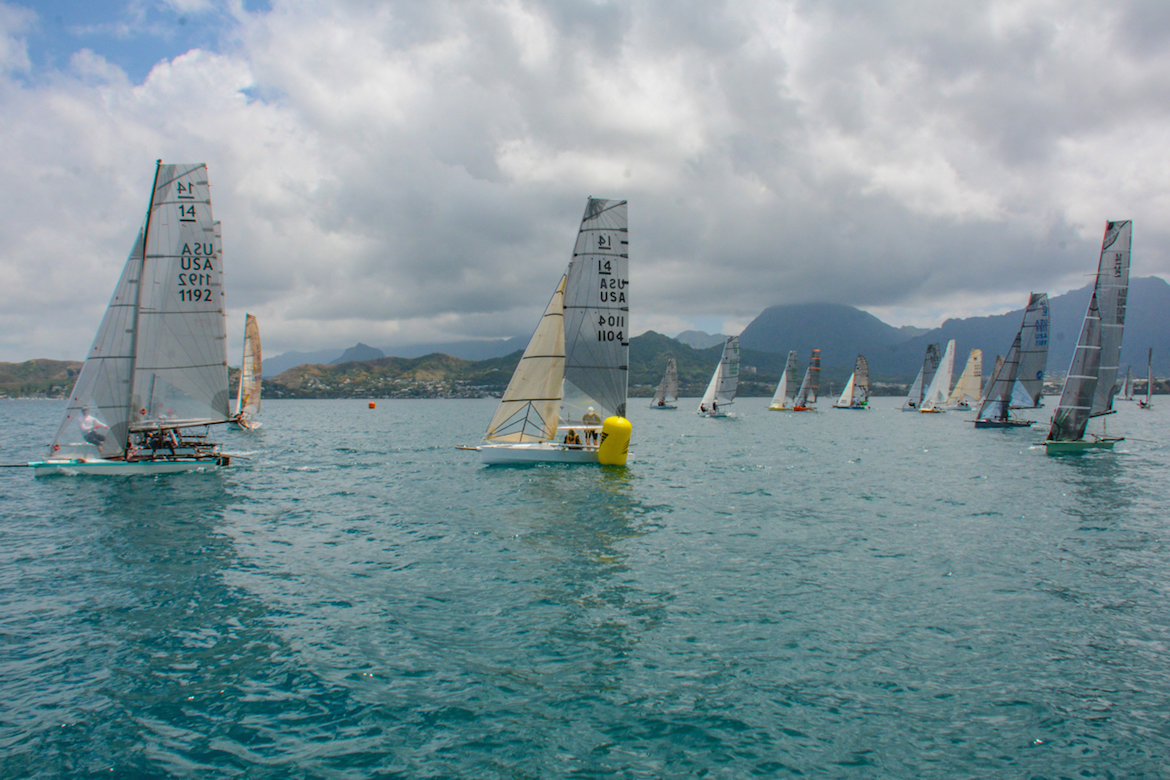
The boats get off the start line on the first day of the 2016 Pac Rim Championships on Kaneohe Bay in Hawaii. Photo: Courtesy of Pasha Hawaii
Arriving in Hawaii, I meet my competition: Women from Australia, Italy, the mainland, and a couple of locals. The youngest woman was 23, the oldest, well, quite a bit older than that. Among my own friends and family, they think I’m pretty daring (and kind of crazy) for wanting to swing around on a skiff trapeze, not to mention that I’m a girl. In Hawaii, I met women of all provenances who are far more daring than I.
What is an I14?
For those of you that don’t know what an International 14 is (and I’m sure there are many—I had no I idea what it was until I saw one), it’s a 14-foot skiff, which is kind of like the very light jet of the sailing world (the HondaJet to Oracle’s fighter jet).
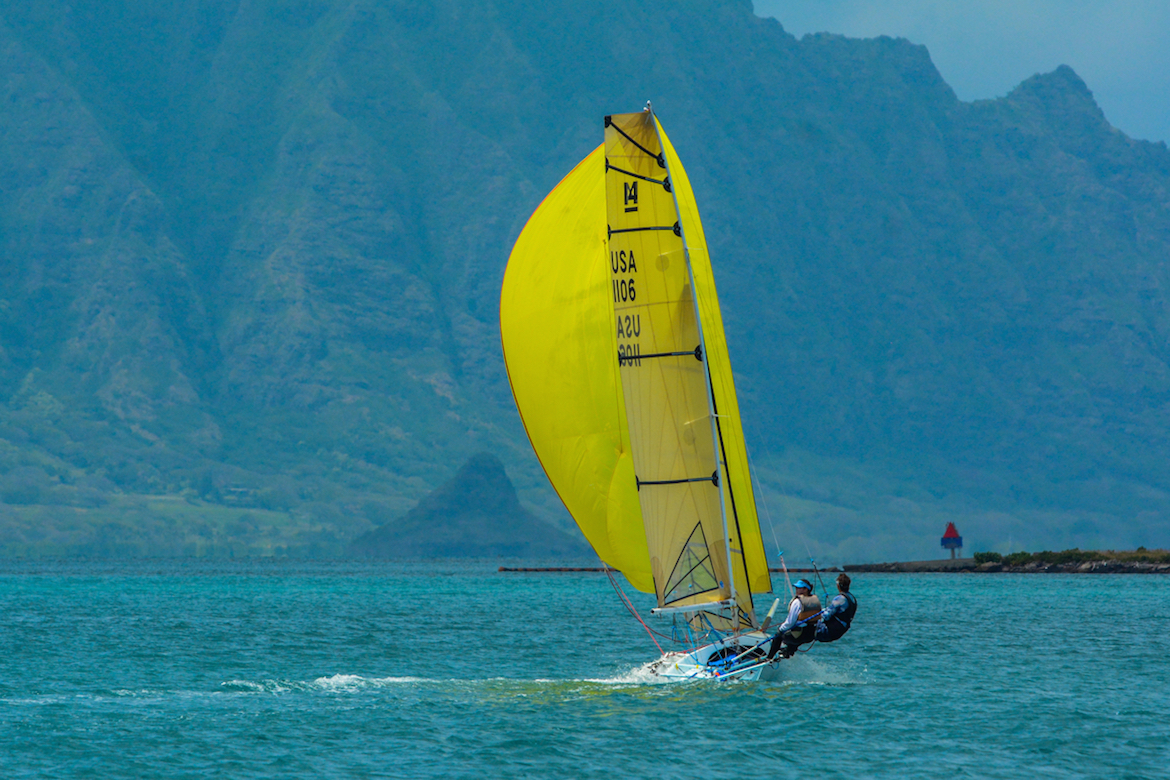
Elise Leroux making it look easy downwind. Photo: Courtesy of Pasha Hawaii
It has a mainsail, jib, and a huge masthead spinnaker. It’s sailed by two people, a driver and a crew, both wearing a trapeze harness, and more often than not, flying over the water on said trapeze, kite sheet in hand, ideally with one shoulder just a few inches from the water’s surface.
The I14 is not a one-design Olympic class boat like the 49er skiff ; it’s a box design development class boat (kind of like the America’s Cup rule). That means that no two boats on the water are exactly the same. They can be customized and improved as much as one wants, as long as they don’t exceed certain parameters like a minimum hull weight and maximum mast height. Perfect for engineers and tinkerers.
Big breeze and flat water
We had been invited to Hawaii by long-time I14 fleet members and regatta organizers Andy and Maureen Bates, whom we knew from the 2015 Transpac race on Adrenalin . We’d been enticed out there by the promise of big breeze and flat water. While the breeze never fully materialized, the surface of the water was as flat as can be—very different from sailing on San Francisco Bay—and very warm. Which was good, because in my limited experience of skiff sailing, I don’t think I’ve ever dumped the boat over as many times in such a short amount of time.
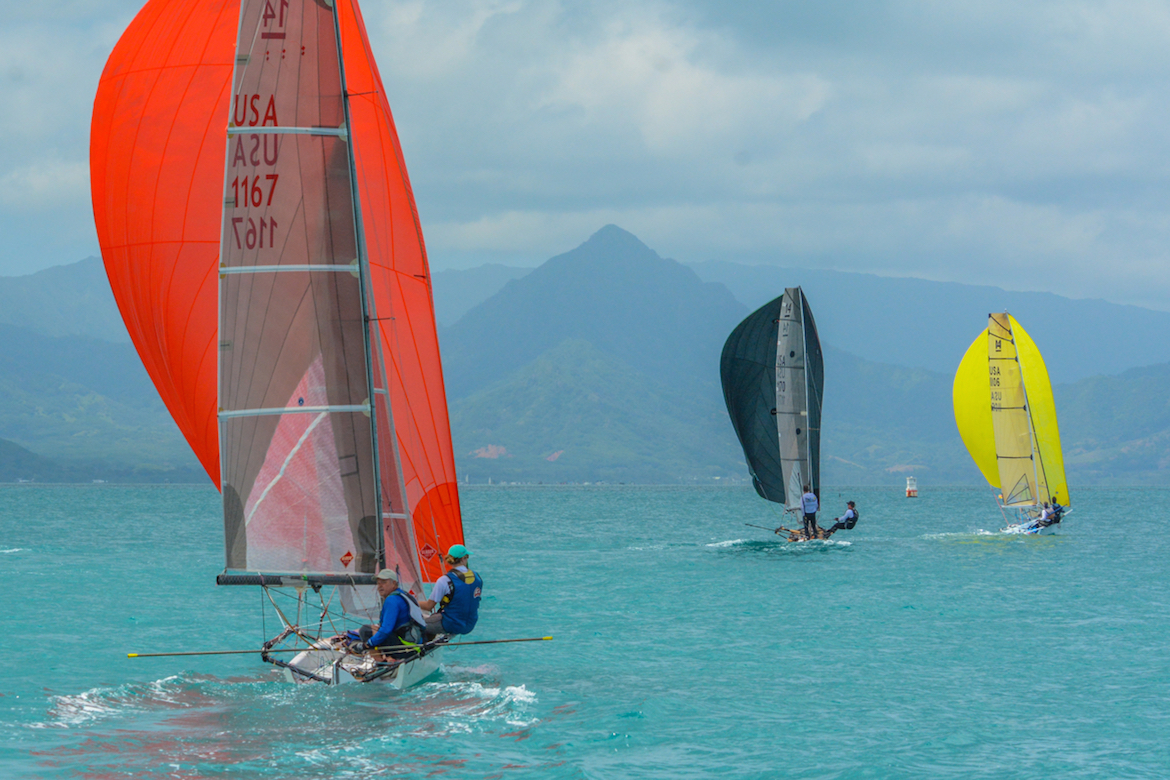
Many competitors were drawn to Kaneohe Bay by the promise of big breeze and flat water, and the views weren’t bad either. Elise Leroux driving the boat with the yellow kite; Maddy Kennedy crewing on the boat with the red kite. Photo: Courtesy of Pasha Hawaii
The I14 isn’t my first skiff; I’d been sailing an RS800 , which is a slightly less- powered-up and more forgiving one-design skiff very popular in the UK, on the San Francisco Bay for almost four years when I got the news that my skiff partner had traded up for a new I14.
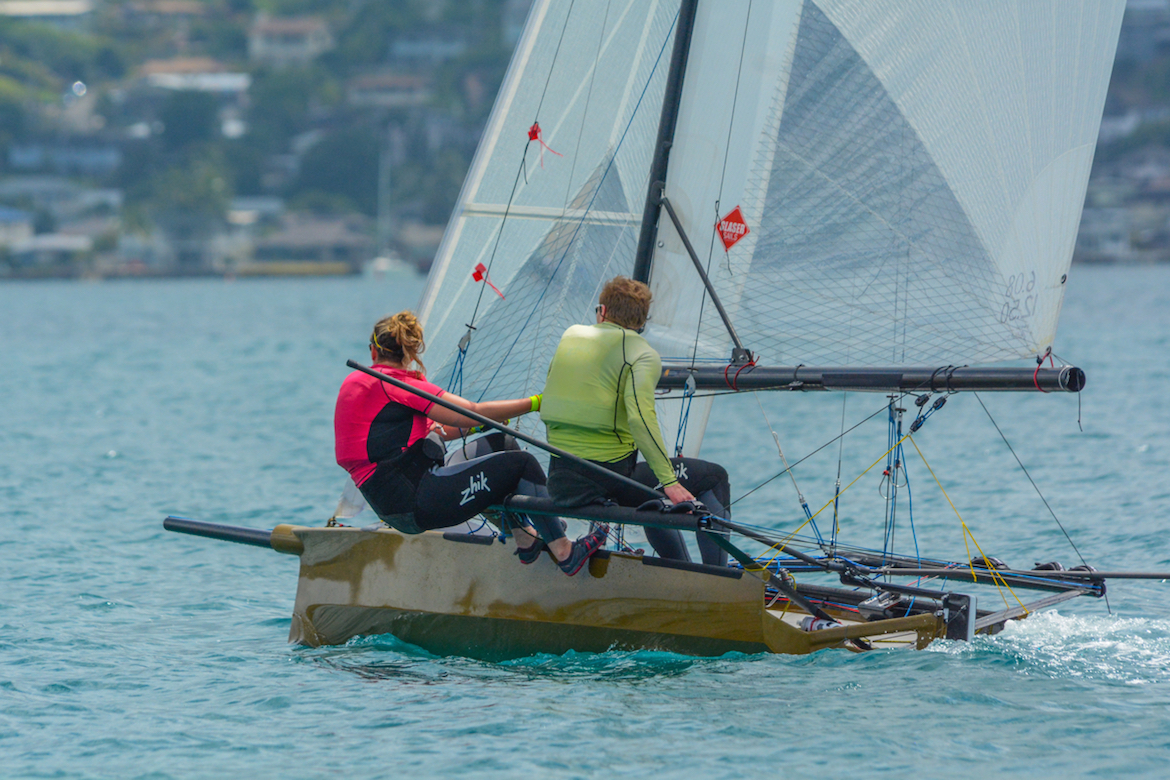
The author, sailing on a brand new Bieker 6 built by Kris Henderson in Seattle. Photo: Courtesy of Pasha Hawaii
The boat, a shiny new Bieker 6 built by Kris Henderson, arrived in San Francisco on a truck from Seattle one early January morning. We’d only sailed it twice before it had to be packed up and loaded into a Pasha Hawaii container.
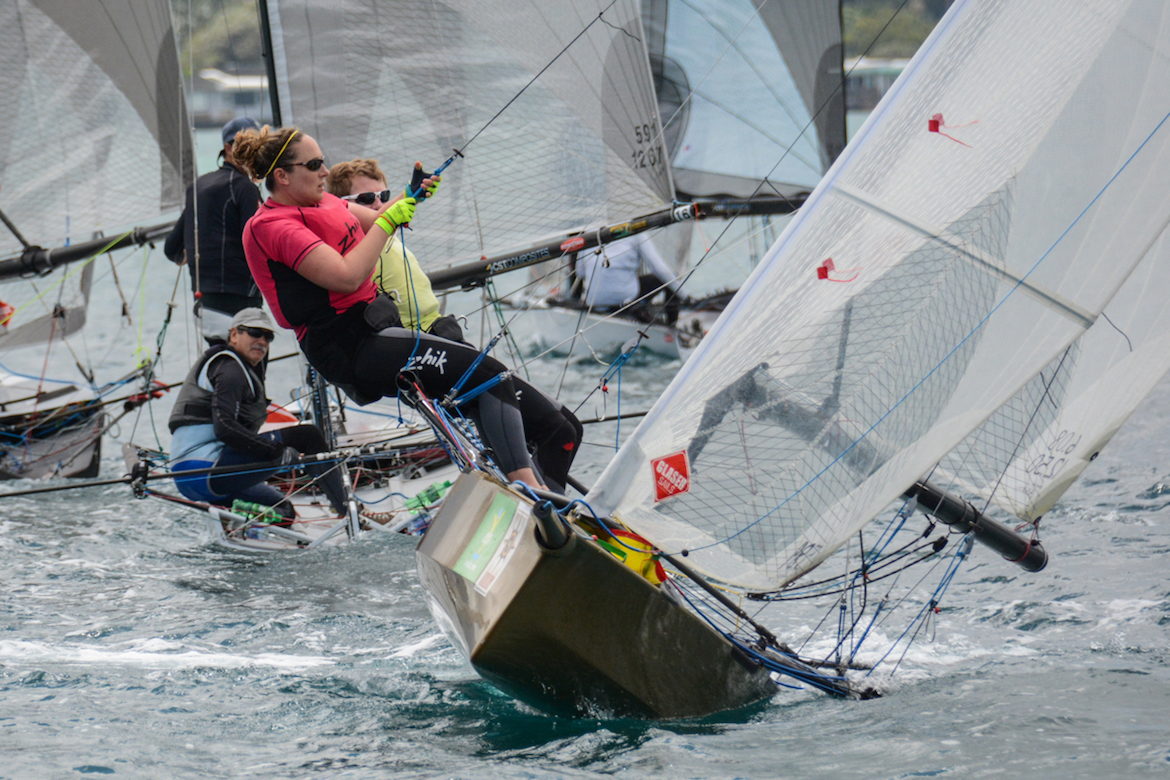
For the author, keeping the boat upright is a full-time job during the chaos of the start. Photo: Courtesy of Pasha Hawaii
We got to Kaneohe Bay the Thursday before the weekend regatta. We sailed an hour or so that first evening after putting the boat together, and almost four hours on our second practice day. By the time we got off the water on Friday afternoon, I was dehydrated, bruised, and had a huge blister tearing across the palm of my left hand.
And I still had four days of actual racing to go.
I’ll admit, the thought did cross my mind at least once that evening… Why did I want to do this again?
The competition
I wasn’t the only woman new to the I14s that weekend. Freya Vickery says she’s been to just about every single I14 regatta since she was born—23 Australian nationals and six worlds—but it was the first one she got to race in.
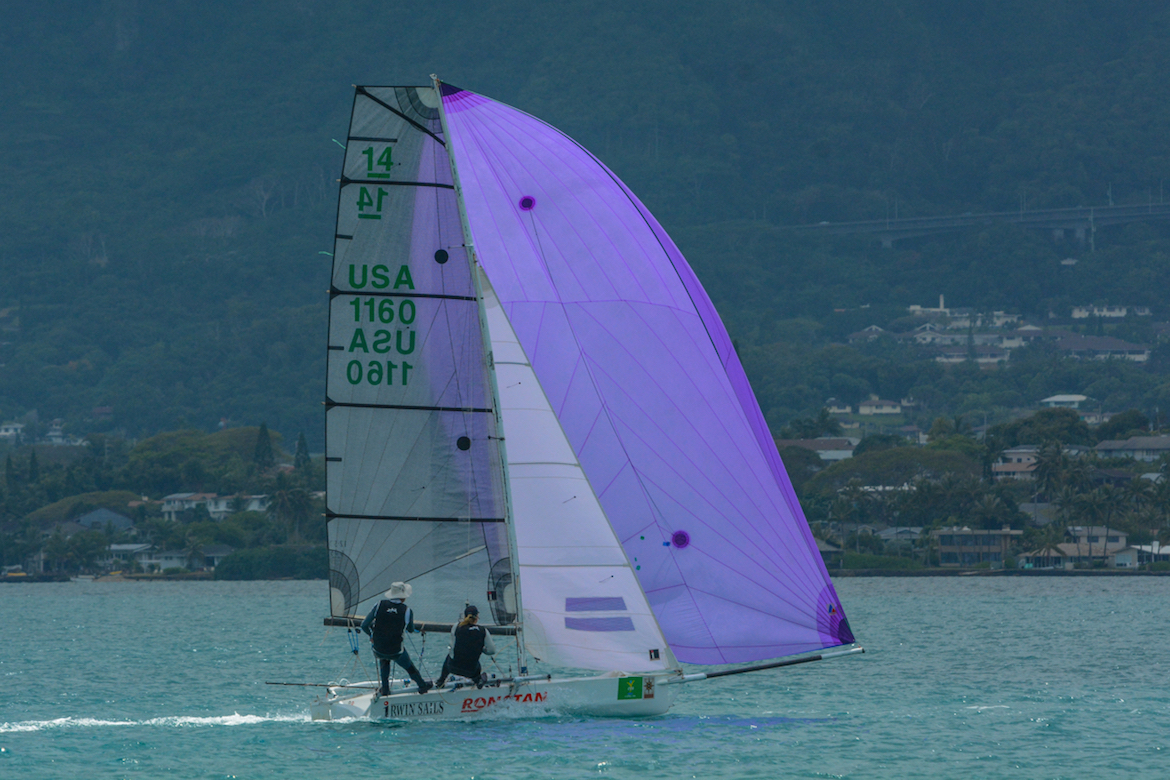
Freya Vickery crewing for her father Stewart on USA 1160. The Vickeries are Australian, but sailed a charter boat in Hawaii. Photo: Courtesy of Pasha Hawaii
“I told my dad in Toronto, I’ve had enough of this. I’m sick of sitting on the sidelines, I want to get involved,” she recalls. She grew up sailing a range of dinghies: optimists, 420s , 29ers , Hobie 16s , and a B14 .
“My dad was so happy, I think he’s been waiting his whole life for me to say that.”
She raced in Hawaii with her dad who is 61 and has been sailing since he was 20.
“He loves his I14 sailing!”
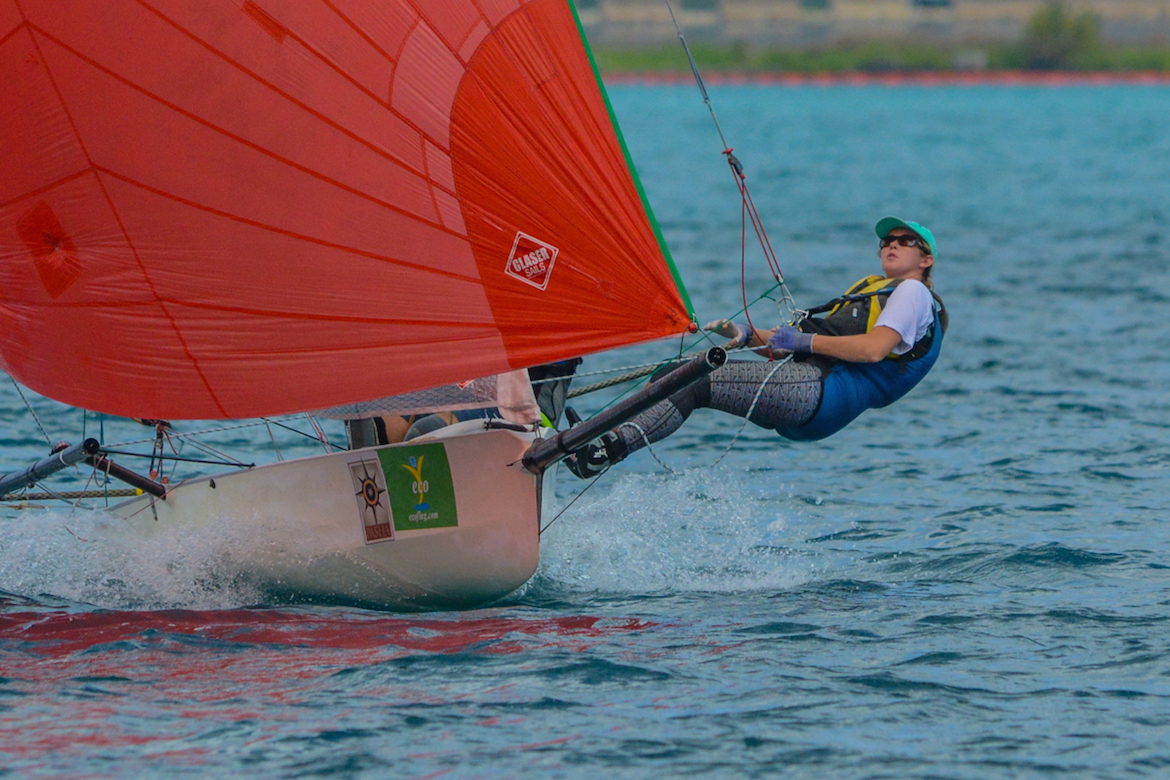
Maddy Kennedy concentrating hard on her kite. Photo: Courtesy of Pasha Hawaii
Maddy Kennedy, a recent graduate of the University of Hawaii, is even newer to the boat. “I’m a sailing instructor at the yacht club. Andy [Bates] found me one day and he needed a crew.” Maddy grew up in Minnesota sailing dinghies and raced FJs in college, but she says the I14s are a lot more fun. “I’m hooked.”
Simona Saccani, a native of Italy who lives in France and now sails out of the U.K. was the veteran of the fleet in Hawaii, at least on the women’s side. She’s been sailing I14s since 2000, when her boat partner Dominic Van Essen, decided to start a new fleet on Lago Maggiore in Ascona, Italy . “He had recruited a bunch of people, we were all working together in the same institute as scientists. So we built up a mini fleet over there.”
Elise Leroux was the veteran female representative from Hawaii. A native mainlander, she says the “short version” of the story is, she visited for a week in the late 1990s, and pretty much never left. In 2004, she was doing bow on a Farr 1020 when a rival bowman said, “Hey, I just bought this great boat…”
“I came out one weekend to sail with him. We did a lot of swimming, but we had some great rides,” she recalls. “We sailed together for a year until he left town. No one needed crew, so it was either buy the boat or stop sailing I14s.” Elise bought the boat.
There were a couple of other women in the regatta with similar stories: My husband really wanted a 14; my dad grew up sailing them and now so do I. It seems that in just about every case it was a man who dragged these women into this boy’s club. I started to wonder, why?
“I guess the guys, somehow, they like the women around,” says Simona. “They treat us like little princesses. I like women, but I don’t like girlies. To be with the men is easy, and the other girls that are around, they’re like me, so it’s perfect.”
I believe I can fly…
So what’s the attraction of I14 sailing? Well, first of all, there’s that aspect of flying.
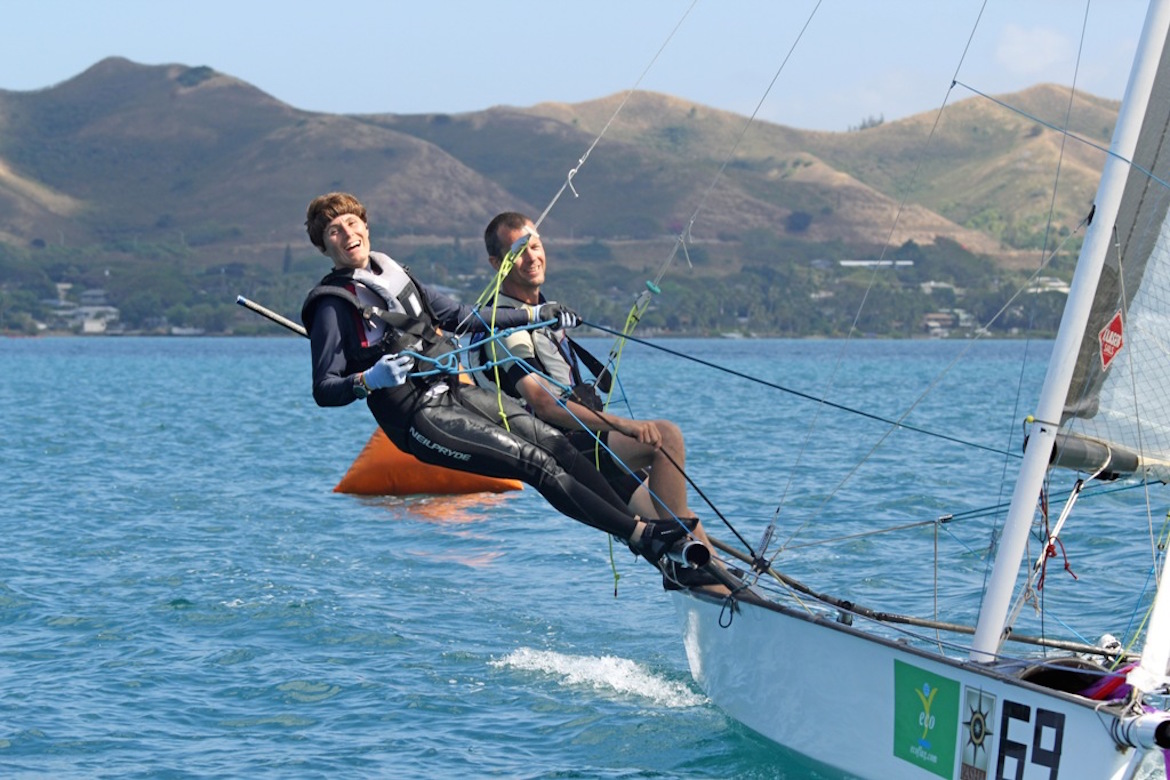
“When you’re flat on the wire and you’re in control, you feel like you’re flying,” says Italian I14 sailor Simona Saccani. Photo: Kai Andrade
“The excitement that you have sailing downwind—you don’t have that with other boats. You go so fast, it’s so amazing. When you’re flat on the wire and you’re in control, you feel like you’re flying,” says Simona.
The I14 is a very narrow boat with a very tall mast, proportionally. So even in light breeze, at least the crew can generally be out on the trapeze.
Freya told me that sailing in Australia is a lot like sailing in San Francisco Bay, with big breeze and huge chop. Sometimes you’re really knocked around. In Hawaii, the flat water makes sailing feel as smooth as a summer breeze. The I14 can plane in as little as eight knots, and sailing it feels like skimming across the surface of a bed of silk.
“I love the flat water. The flat water is amazing. I’m so glad to get this chance to sail at this magical place,” says Freya.

To drive or crew
It’s commonly understood that the best configuration for a mixed crew to sail a skiff or small catamaran, is for the man to crew and the woman to drive, which I suppose leverages masculine strength and feminine finesse. My skiff partner and I have always known we were doing it “wrong” since he drives and I crew, but in sailing, for me, there’s nothing better than trimming the kite and he likes to drive.
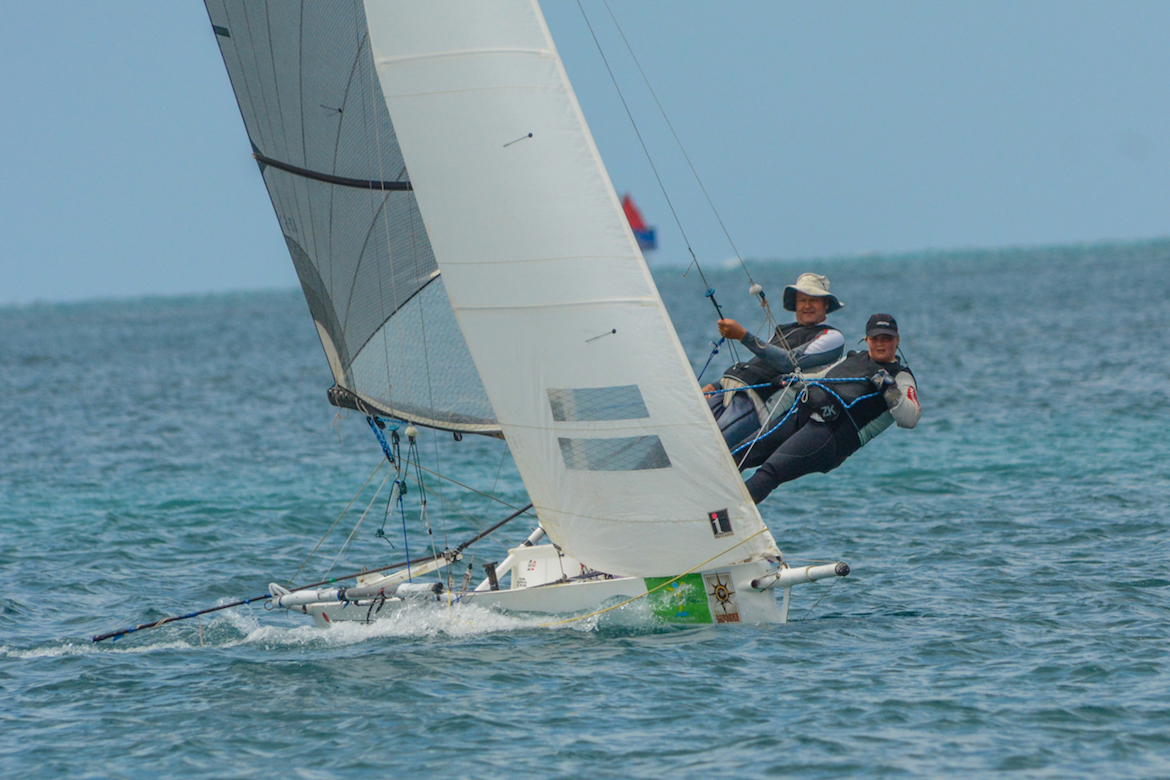
Like father like daughter: Freya Vickery crewing for her father. Photo: Courtesy of Pasha Hawaii
In Hawaii, I was surprised to discover that just about all of the women were crew. “Dad wants me to crew because he can’t crew,” says Freya. “It gets pretty hectic skippering, but hopefully one day I’ll get into it.”
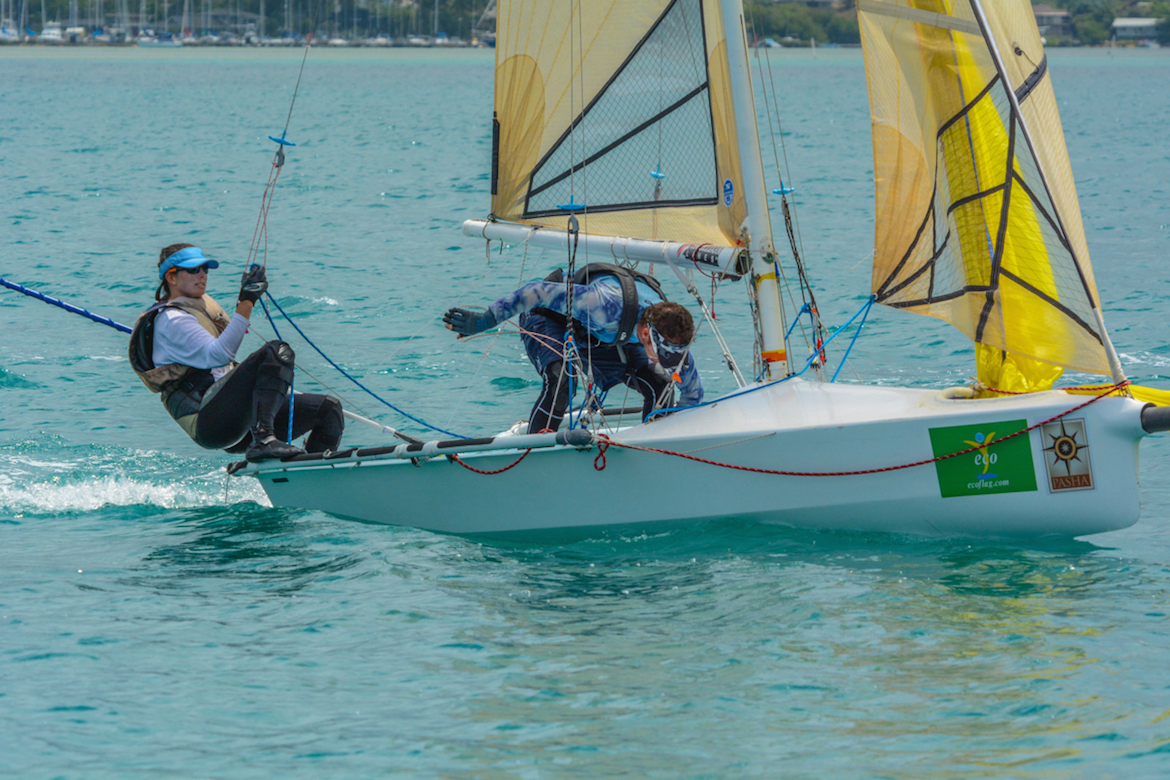
Elise Leroux was the only female driver at the Pac Rim this year. Photo: Courtesy of Pasha Hawaii
Elise was the only driver. When she bought her own boat, she had two other women, Maureen Bates and Heather MacCafrey, come out to crew for her. “They took a beating because I was not very good, but we had a great time and I still love doing it.”
Simona on the other hand, says she prefers to crew. “I get too stressed when we go downwind, I don’t feel good to drive the boat. We tried to switch, but for me it’s much more stressful. I feel relaxed if I have the main and do the hard jobs.”
I would tend to agree. As long as you can trust your driver, crewing is the much more physically demanding, but far less stressful position. However, I wasn’t the only one to mention how tired I was at the dock.
“I think after yesterday I don’t know if there’s a time I’ve been more tired after a regatta. The four-lapper—it was about all I could do to get the kite up and back down,” says Maddy. And then she hastily adds, “I’d definitely do it again though.”
It’s not all work
Even more than the smooth water and the chance to fly, everyone told me that what keeps them in the class is the welcoming community.

Left to right: Elise Leroux says one of the things she loves about the I14 community is how supportive everyone is, but on the water, it’s every sailor for herself!; Group shot of regatta participants after the boats were packed back into the Pasha Hawaii containers for the trip back to the mainland; the I14s enjoyed four days of spectacular racing on Kaneohe Bay. Photos: left and right courtesy of Pasha Hawaii, center:Maureen Bates.
“I love the 14 fleet because it’s just fantastic—young and old, we’re all partying together. I went backpacking around the world and camped at every 14 sailor’s house around America and Germany. It’s just a really good fleet to get involved with,” says Freya.
And it’s not just partying—the fleet truly wants to help newcomers get started.
“It’s a really supportive fleet. Both this whole group here and locally. If I need help fixing my boat, there are people willing to help me or give me advice,” says Elise.
In Europe, Simona says the atmosphere is similar. “The class is really welcoming in general. You feel easy. Everybody’s helping, it’s a nice atmosphere. It doesn’t matter your level, you have your own race within the big race. We are at the bottom of the fleet, but we have fun anyway.”
A personal trophy
I didn’t win the hand-carved Koa half-model; Freya did, and it was a job well done. I did get my own trophy in the roast though, a Viking helmet from our host Andy Bates for being the “toughest girl in the race.” I was purple polka-dotted by the end from climbing back in after we’d capsized the boat, and I’m not going to lie, there were a few times, like when sailing to a mile marker out in the ocean along a reef that just happens to be one of the largest breeding grounds in the world for hammerhead sharks, I was pretty terrified.
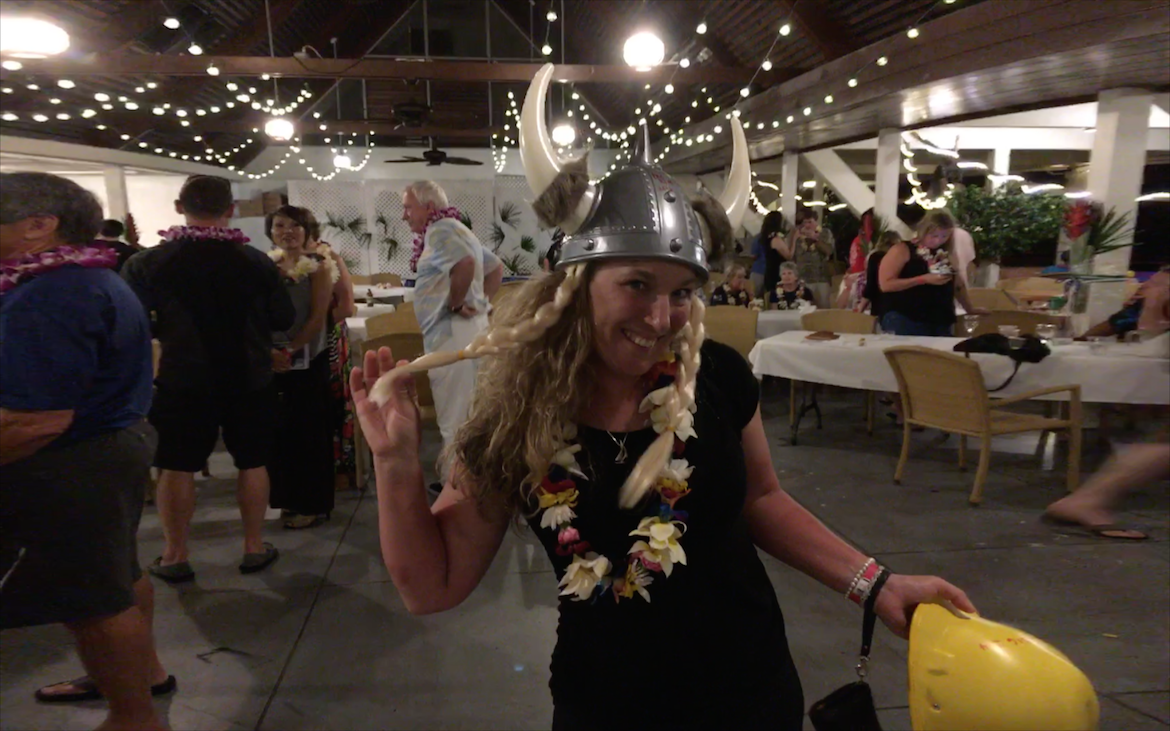
The author won the “Viking Award” for being the toughest crew in the regatta during the post-race roast. Photo: Maureen Bates
But would I do it again? Definitely.
And not just because flying on a trapeze along turquoise water under a clear blue sky is an experience to be repeated as many times as possible, but for the chance to hang out with this incredible group of women, our own fleet within the fleet.
Leave a Reply Cancel reply
Save my name, email, and website in this browser for the next time I comment.
International 14
O ne of the World's Premiere Sailing Classes
|
|
| 7755 Seaview Ave NW Seattle WA 98117 (206) 789-1919
CYC Gold Partner |
CYC Gold Partner
|
CYC Silver Partner
And CYC Business Member
|

- AMERICA'S CUP
- CLASSIFIEDS
- NEWSLETTERS
- SUBMIT NEWS

International 14s for sale
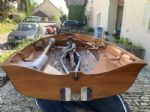
International 14
Twin trapeze development class that has always been at the forefront of racing development.
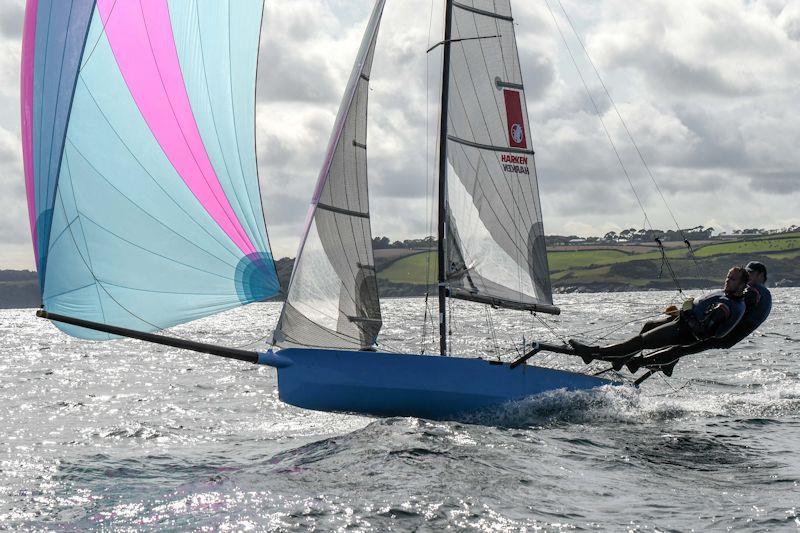
| Pos | Crew | Mast | Boom | Spi Pole | Main | Jib | Spinnaker | Rudder | Board | Hull |
|---|

- Latest videos, from 2023
- Oldest videos, from 1930 onwards
Show photos from latest 2024 2023 2022 2021 2020 2019 2018 2017 2016 2015 2014 2013 2012 2011 2010 2009 2008 2007 2006 2005 2004 2003 2002 2001 2000 1999 1998 1997 1996 1995


International 14 Foot Skiff Class - Australia
Welcome to the International 14 Foot Skiff Class - Australia
The International 14, or "14," is a twin trapeze, high-performance sailboat renowned for its exhilarating speed and agility on water. Originating over a century ago, this dynamic class of skiff has evolved into a cutting-edge racing machine that pushes the boundaries of innovation and skill.
This platform serves as a hub for enthusiasts, novices, and experts alike, providing a wealth of information, insights, and resources about the International 14 foot skiff. Whether you're a seasoned sailor or just beginning to unfurl your sails, our website is your gateway to immersing yourself in the world of International 14 foot skiff sailing like never before.

Latest news
Upcoming events.

Published on August 17th, 2014 | by Editor
Made in China: International 14
Published on August 17th, 2014 by Editor -->
Innovation and boat handling are synonymous with the International 14 which has remained remarkably progressive considering it is one of the oldest racing classes in the world.
Encouraged by a semi-restricted class rule, the i14 is all about controlled evolution. From trapeze and asymmetrical kites, to foils and carbon, the class has a good record of embracing change, albeit with the inevitable pain.
Innovation however comes at a financial cost and carbon is a good example. It is a fabulous boat building material that delivers incredible high strength to weight ratios. Not surprising, i14 sailors love carbon but that love affair can be expensive due to relatively high material costs and labour-intensive construction demands.
The class, fortunately, is not short of its fair share of resourceful sailors. For several years, a small group of Australian i14ners, led by an unbreakable class president Stewart Vickery, have tinkered with production-run boats.

The challenge of course has been to settle on a design that will give top end performance and to source a builder who has the systems, resources and ability to build in carbon at prices affordable to a wider audience and not just the well-financed class fanatics.
It would seem the Australians have hit on an attractive formula with the Stealth design and a carbon boat builder in China who has built moulds and refined processes to produce a significantly less expensive, light, strong, quality boat.
The result is a super stiff i14 at approximately $13k (all dollars are in US) for hull and racks clear finished plus approximately $2k for duty and freight; or for $15k you are looking at hull, racks, centre board, rudder, foils, rudder box clear finished; plus duty and freight. This means a saving of more than $10k.
Peter Newman of China New Yachts Ltd says they were using products that were available in China at a competitive price which were thoroughly tested in other boats. The ‘other boats’ from this builder have included the 44ft Veloce which finished second overall in IRC in the 2013 Sydney to Hobart Yacht Race.
“The laminate is carbon pre-preg and Corecell SAN foam construction in female moulds which are cured in our controlled oven,” Peter said. “We use a woven carbon prepreg cloth on the outside to get excellent impact without adding much weight, all other materials are unidirectional carbon prepregs at various constructs to gain maximum strength to weight ratios. The semi-monocoque construction gives a very stiff, finished hull, clear painted at less than 46kg.”
Newman said they were able to ship to all parts of the world from Qingdao, which was home to the fourth largest container port in China.
Designer David Lugg of Western Australia said Stealth was designed a couple of years ago and has since proven to be an easily driven, stable hull well suited to today’s rigs.
“The boat was designed for the moderate to strong winds and relatively flat water that make a 14 such as great boat to sail,” according to Lugg. “Although the boat’s light weather performance has been good, it was considered some small modifications would further enhance its performance with minimal impact on speed in the stronger wind conditions.
“The construction of new moulds offered the opportunity to tweak the lines. The chine was lifted slightly at the stem and narrowed by 30mm a metre aft of the stem. The Stealth design had a very straight, flat run aft. A small amount of keel rocker has now been added.”
Multi national champion in the Australian i14 fleet Brad Devine knows Lugg well and said: “I really like Luggy’s design and like the concept of having a cheap builder that can build to high standard with a good design.
“The designs (eg., B5, K3 and Stealth) within the class now are all that similar, that as long as the hull is light and stiff, that is all you need. The next step in the equation is getting a good rig, which is pretty standard now days and a good rudder and centerboard, which is also very standard.
“The way things are shaping up with the boat at this stage, I would suggest that it will be a great success.” Victorian Dave McGeoch was one of the first to order a Stealth from China.
“I can let you know that for someone who has watched the 14 class develop since 1977 to today, it shows to me that the imagination from many sailors in regard to design, construction and fitouts is exceptional.
“The impressive way this build was handled by Peter Newman from the legal documentation of the contract of sale to the regular information supplied at milestones of the build and of course the final delivery has left me in no doubt that his professional competence has been outstanding.
“It appears to me that the light weight 44.5 kg less spin pole, racks and fittings would seem to give me some concern (regarding strength), but having carried out some destructive testing on a sample of the hull it has barely marked the outer skin with no compaction of the inner core.”
“The boat’s hull looks great and is clean with a simple deck design for ease to fit out.”
The Royal Geelong Yacht Club has opened online entries for the 2015 International 14 World Championships, which are to be held from 3rd to 17th January 2015 in Geelong, Australia (see www.i14worlds2015.com).
The 2015 event will mark only the third time that Australia has hosted this World Championships, with the previous event being run on Sydney Harbour in 2010 when more than 100 i14s lined up to start. Designer Notes: The hull sections, although fine forward, rapidly become very flat aft of midships and lift to a low chine. The end result is a hull form that has significantly reduced draft compared to other current designs, promoting earlier planing. Modern I14’s sail upwind at speeds in the 8 to 12 knot range. Stealth makes a very smooth transition between displacement and full planing mode.
The more powerful, lower drag rigs used today suit a hull form that is flatter and fuller in the ends. The effect is to increase what Naval Architects refer to as the prismatic coefficient, a ratio describing the longitudinal distribution of underwater volume. Higher prismatic coefficients are closely associated with higher hull speeds.
The I14 rule measures the mast height above the sheer line at the mast station, consequently the higher the sheer, the higher the mast. Additionally the increase in sheer height has the benefit of making the boat much stiffer longitudinally and keeps the rack tubes well clear of the water.
The sides of the boat are slightly cambered to increase panel stiffness allowing a thinner, lighter core to be used.
The angle of the bowsprit has been increased from the original design to give the spinnaker tack a greater clearance to the water when the crew weight is moved forward in light weather.
Enquires about the production i14 should go to: [email protected] ; or m. 0418 321 345 Report by Neil Patchett.

Tags: International 14
Related Posts
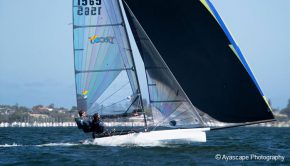
Brits dominate International 14 Worlds →
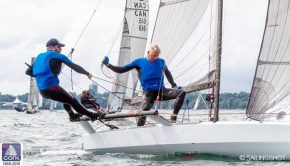
Cunningham, Struthers win I14 North Americans →
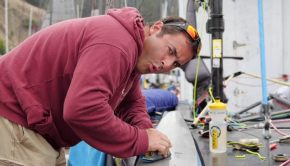
How I lost my virginity… →
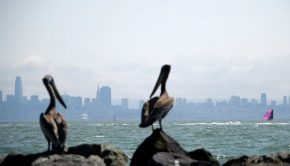
Video Highlights: International 14 Worlds →
© 2024 Scuttlebutt Sailing News. Inbox Communications, Inc. All Rights Reserved. made by VSSL Agency .
- Privacy Statement
- Advertise With Us
Get Your Sailing News Fix!
Your download by email.
- Your Name...
- Your Email... *
- Phone This field is for validation purposes and should be left unchanged.

Boat fire at Eureka Marina quickly extinguished by Humboldt Bay Fire
by Christopher West

EUREKA, Calif. — Around 9am on Aug. 20, Humboldt Bay Fire (HBF) responded to a reported Boat Fire at 1 Marina Way at the Eureka Public Marina.
Humboldt Bay Fire responded to the area with one ladder truck, three engines, and one Chief Officer. The first unit arrived to find black smoke coming from the boat.
They said one occupant had already been pulled from the fire before their arrival. The occupant thankfully had minor injuries, and fire crews quickly went to work extinguishing the fire and treating the injured occupant. It was also noted that a dog had jumped from the vessel after the boat caught fire and was unharmed. The dog remained with Fish and Wildlife personnel until EPD animal control took over care.
HBF was able to extinguish the fire in a manner that prevented the boat from sinking or causing fuel, oil, or other contaminants into the bay. Life and safety are operational priorities to us and we also place a heavy tactical priority on protecting the environment.
There were no other injuries.
However, the boat sustained major damage and was considered a total loss with damages estimated at around $20,000. The cause of the fire is under investigation.
HBF also thanked the Eureka Police Department, City Ambulance, and Fish and Wildlife who also assisted in stabilizing the incident.
Humboldt Bay Fire wants to remind the community to call 9-1-1 immediately during any emergency, no matter the location.

- AMERICA'S CUP
- CLASSIFIEDS
- NEWSLETTERS
- SUBMIT NEWS

What's it like to join the I14 fleet?
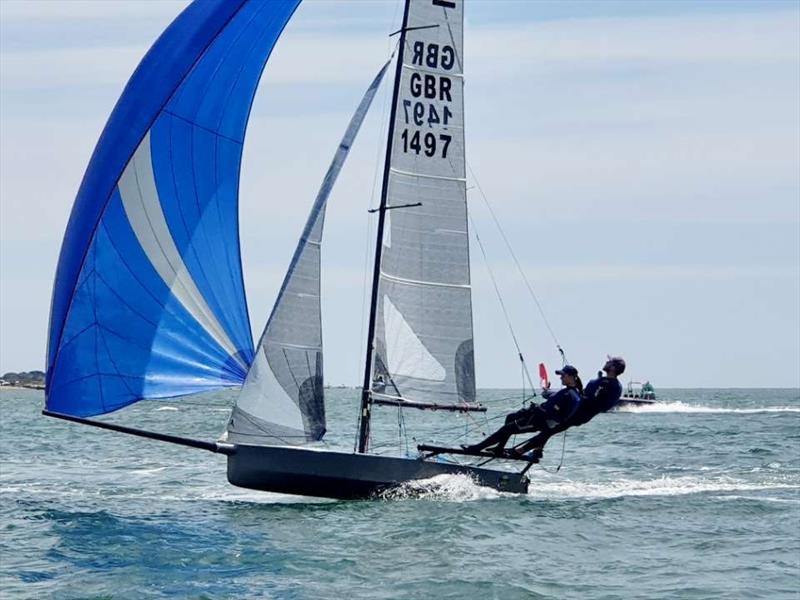
Related Articles
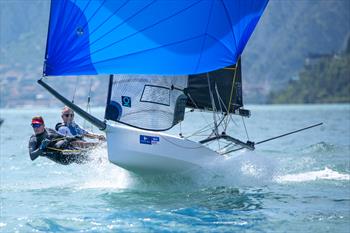

This newscast is updated weekdays at 6am, 9am, noon, 3pm, and 6pm.
Worshippers bless the Mississippi River by boat, in an act of Eucharistic revival

BATON ROUGE, La. — The air was already steamy at 8 a.m. on an August morning, the sidewalk radiating heat waves as a crowd filtered into St. Joseph Cathedral in downtown Baton Rouge. Hundreds filed into the church, adorned in veils and athleisure wear, white robes and tennis shoes.
They were among thousands of Catholics who converged on the Mississippi River Aug. 14 and 15 for the Fête-Dieu du Mississippi. The two-day boat procession traveled down the river from Baton Rouge to New Orleans. Its star attraction is a 14-foot-tall golden sculpture called a monstrance, which is used in Catholicism to house the spirit of Jesus Christ in the Eucharist.
The Fête’s concept of a blessing from God bestowed upon a fleet of ships and those who come out to witness it has deep roots in Louisiana tradition. Vessels setting out on shrimping voyages garnered blessings from Catholic priests as far back as the early 1900s. Shrimping was — and still is — a prominent industry in Louisiana and used to be a lot more dangerous. Drownings, accidents involving hooks and pulleys and frequent engine explosions on board were common enough for shrimpers to seek divine intervention in order to feel safe.

This blessing, usually held on Bayou Teche in the Atchafalaya Basin, represents an intersection of Catholic and Louisiana tradition. Having the pilgrimage on the water rather than on land, “recalls our rich Acadian history and, in a way, re-enacts the journey made by the Acadians 250 years ago,” according to the Fête-Dieu du Teche website .
“The Mississippi River is known around the world,” said Aimee Dawes, an attendee from Baton Rouge. “To put Jesus on the boat with the crucifix to travel down the river, so many more people get to witness him.”

The procession started with a Mass on Aug. 14 at Baton Rouge’s oldest church, the gothic building filled to the brim with people from all across the southeastern United States. Inside, the church boomed with sound as the orchestra and choir played and sang in grand unison. Great mahogany arches towered over the parishioners as sweat stained the backs of shirt collars. Paper programs gained a second life as fans to swirl around the still, hot air.
“Let the blessings of our Lord and Our Lady of the Palm Sunday be upon us this hurricane season,” Father Michael Champagne said from the pulpit.
“Lord, hear our prayers,” the crowd responded.

The procession, a pilgrimage organized by Champagne and the Community of Jesus Crucified in St. Martinville, carried at its center the 14-foot-tall golden monstrance, central to the tradition of the Eucharist. Deacons and volunteers, red-faced from the heat, pushed the glittering structure from St. Joseph Cathedral to the Baton Rouge boat dock on the river using a rolling metal cart adorned with boxes of pink, red and white carnations.
The 130-mile voyage down the Mississippi River took place against the backdrop of a nationwide Eucharistic Revival, sponsored by U.S. bishops with the goal, according to the National Eucharistic Revival’s website, to “be united once again around the source and summit of our faith in the celebration of the Eucharist.”
The Eucharist is a Catholic ceremony commemorating the Last Supper, in which Jesus ate bread and wine with his apostles the night before his crucifixion. At the core of this ceremony is the idea that the bread and the wine are not just symbols but become “the real body and blood of Jesus” after undergoing a process called transubstantiation.
According to the Pew Research Center, in a 2019 survey , 69% of self-described Catholics believe the bread and the wine used in communion are symbolic representations, deviating from official church doctrine that says the bread and wine aren’t symbols, but truly are the presence of Christ.

The movement to drum up support for stronger Catholic belief in the presence of Christ in the Eucharist began in 2022 . It rolled out with a three-year action plan culminating in a National Eucharistic Congress in Indianapolis this past July and pilgrimages like the Fête-Dieu du Mississippi happening across the country.
The Fête was held on the Mississippi River this year rather than Bayou Teche to match a central idea in the Eucharistic Revival: Go big.
Downriver in St. Charles Parish, hundreds of faithful gathered Aug. 15 for the second day of the Fête under the Hale Boggs Bridge in Luling. The event coincided with the Feast of the Assumption, a holy day for Catholics that marks the death of Jesus’ mother, Mary, and her ascension into heaven.
Three busloads of students from St. Charles Borromeo Catholic School in nearby Destrehan were among the participants who lined the riverbank. Their principal, Rachel Hafford, made it a priority to bring the kids to see the flotilla.
“We started [school] last Thursday, so it was quite a task to get a field trip underway and get buses and all that,” Hafford said. “But … being such an instrumental part of our faith, there's no way … that we would miss this opportunity.”

A few nearby tugboats maneuvered to flank the Eucharistic procession, mirroring people on the riverside who kneeled as the giant golden sculpture floated by under the bridge.
The celebration included a solemn moment in remembrance of those who died in the George Prince ferry disaster almost 48 years ago. St. Charles Parish President Matthew Jewell placed a wreath on the riverside to mark the occasion.

As the vessel carrying the Eucharist passed along the river, Ann Roshto of Baton Rouge joined many others on their knees and wept. Her tears were brought on by the significance of the moment and the river to her life and the state, she said.

“The river is important to Louisiana. It’s just a blessing.” she said. “And for Jesus to travel down the river, to allow us to come here and to give him praise and worship, He deserves all the glory.”
The journey down the river ends with another Mass in St. Louis cathedral and celebration in Jackson Square in New Orleans. Onlookers gather around the outside of the church as faithful enter through the arched central doorway. A boy sits on a man’s shoulders and cups his hands over his eyes, peering past the wrought iron fences and French Quarter lanterns in Jackson Square, curious.
Greg LaRose contributed to this report from Luling. This story is a product of the Mississippi River Basin Ag & Water Desk , an independent reporting network based at the University of Missouri in partnership with Report for America , with major funding from the Walton Family Foundation.
👋 Looks like you could use more news. Sign up for our newsletters.
- Weekly News
- Coastal Desk
- Station news
'All hands on deck.' Search underway on lake for missing FGCU student
An unidentified FGCU student was missing Wednesday night after an incident involving a boat on a lake near the north end of the Fort Myers campus.
At 7 p.m. units responded to reports of the missing boater on Lake Como. Lee County Sheriff Carmine Marceno said the missing person is a male who is enrolled at the university. Lake Como is 80 acres and is adjacent to the North Village on the FGCU campus. It is shared between FGCU and the Miromar Lakes community.
LAKE'S HISTORY OF DEATH: One student, two children have drowned here since 2011
According to Marceno, who held a media briefing at 11 p.m. on Wednesday, the boat was a private vessel that departed from the Miromar Lakes side of Lake Como.
Divers were deployed, a helicopter flew above the lake and Jet-Skis were being used. FGCU Police Chief Jim Slapp also spoke at the briefing.
"There were 13 occupants on a boat with a capacity of 16,” Marceno said. “It's all hands on deck − all of our technology. When I say everybody, you can see every agency is represented. The water is dark. It’s murky. It’s night. It’s difficult terrain. The lake goes from 10 feet, to sometimes 20 to 30 feet very, very quickly.”
Fall semester classes at FGCU started on Aug. 14.
In an email to the FGCU students and faculty, the school's president Aysegul Timur said: "Our positive thoughts and wishes go out to his family, friends, classmates and all other Eagle family members as we wait for updated information on the search."
Aysegul Timur: FGCU president addresses search for missing student in email
Even a drone was seen in the air completing aerial searches.
The Florida Fish and Wildlife Conservation Commission and the San Carlos Park Fire Department assisted with the search.
In July of 2022, two children, 12 and 7, who were vacationing from Atlanta, drowned in the same lake.
The investigation has been transferred to the Major Crimes Unit, Marceno said.
The missing boater’s friends gathered around the scene to show their support. They huddled together and waited for news. Other students noticed the commotion in passing.
“I was in my dorm about two hours ago. There were multiple cop cars, a helicopter and students exiting their dorms on the waterfront. I didn't really know what was going on until later on in the day when I got a text from one of my friends saying that apparently someone had drowned,” said student Peter Ramundo.
Slapp announced there will be walk-in counseling services at FGCU for students and faculty. More than 16,000 students are enrolled at the university.
“Our thoughts and prayers are with the family at this time and everyone else who is affected,” Marceno said.
Advertisement
Supported by
Lynch Yacht Sinking Off Sicily Proves as Baffling as It Is Tragic
As bodies were recovered, the authorities and experts wondered how a $40 million, stable and secure vessel could have sunk so quickly.
- Share full article

By Emma Bubola and Michael J. de la Merced
Emma Bubola reported from Porticello, Italy, and Michael J. de la Merced from London.
Two months after being cleared in a bruising legal battle over fraud charges, the British tech mogul Mike Lynch celebrated his freedom with a cruise. He invited his family, friends and part of his legal team on board his luxury sailing yacht, a majestic 180-foot vessel named Bayesian after the mathematical theorem around which he had built his empire.
On Sunday night, after a tour of the Gulf of Naples, including Capri, and volcanic islands in the Eolian archipelago, the boat anchored half a mile off the Sicilian coast in Porticello, Italy. It chose a stretch of water favored by the Phoenicians thousands of years ago for its protection from the mistral wind and, in more recent times, by the yachts of tech billionaires. The boat was lit “like a Christmas tree,” local residents said, standing out against the full moon.
But about 4 a.m., calamity unfolded. A violent and fast storm hit the area with some of the strongest winds locals said they had ever felt. Fabio Cefalù, a fisherman, said he saw a flare pierce the darkness shortly after 4.
Minutes later, the yacht was underwater. Only dozens of cushions from the boat’s deck and a gigantic radar from its mast floated on the surface of the sea, fishermen said.
In all, 22 people were on board, 15 of whom were rescued. Six bodies — five passengers and the ship’s cook — had been recovered by Thursday afternoon, including that of Mr. Lynch, an Italian government official said, adding that the search was continuing for his daughter.
It was a tragic and mystifying turn of events for Mr. Lynch, 59, who had spent years seeking to clear his name and was finally inaugurating a new chapter in his life. Experts wondered how a $40 million yacht, so robust and stable could have been sunk by a storm near a port within minutes.
“It drives me insane,” said Giovanni Costantino, the chief executive of the Italian Sea Group, which in 2022 bought the company, Perini, that made the Bayesian. “Following all the proper procedures, that boat is unsinkable.”
The aura of misfortune only deepened when it emerged that Stephen Chamberlain, 52, a former vice president of finance for Mr. Lynch’s former company and a co-defendant in the fraud case, was killed two days earlier, when he was hit by a car while jogging near his house in England.
Since June, the two men had been in a jubilant mood. A jury in San Francisco had acquitted both on fraud charges that could have sent them to prison for two decades. There were hugs and tears, and they and their legal teams went for a celebratory dinner party at a restaurant in the city, said Gary S. Lincenberg, a lawyer for Mr. Chamberlain.
The sea excursion was meant as a thank-you by Mr. Lynch to those who had helped him in his legal travails. Among the guests was Christopher J. Morvillo, 59, a scion of a prominent New York family of lawyers who had represented Mr. Lynch for 12 years. He and his wife, Neda, 57, were among the missing.
So, too, was Jonathan Bloomer, 70, a veteran British insurance executive who chaired Morgan Stanley International and the insurer Hiscox.
The body of the ship’s cook, Recaldo Thomas, was recovered. All the other crew members survived. Among them was Leo Eppel, 19, of South Africa, who was on his first yacht voyage working as a deck steward, said a friend, who asked not to be identified.
Since the sinking, the recovery effort and investigation have turned the tiny port town of Porticello, a quiet enclave where older men sit bare-chested on balconies, into what feels like the set of a movie.
Helicopters have flown overhead. Ambulances have sped by with the sirens blaring. The Coast Guard has patrolled the waters off shore, within sight of a cordoned-off dock that had been turned into an emergency headquarters.
On Wednesday afternoon, a church bell tolled after the first body bag was loaded into an ambulance, a crowd watching in silence.
The survivors were sheltering in a sprawling resort near Porticello, with a view of the shipwreck spot, and had so far declined to comment.
Attilio Di Diodato, director of the Italian Air Force’s Center for Aerospace Meteorology and Climatology, said that the yacht had most likely been hit by a fierce “down burst” — when air generated within a thunderstorm descends rapidly — or by a waterspout , similar to a tornado over water.
He added that his agency had put out rough-sea warnings the previous evening, alerting sailors about storms and strong winds. Locals said the winds “felt like an earthquake.”
Mr. Costantino, the boat executive, said the yacht had been specifically designed for having a tall mast — the second-tallest aluminum mast in the world. He said the Bayesian was an extremely safe and secure boat that could list even to 75 degrees without capsizing.
But he said that if some of the hatches on the side and in the stern, or some of the deck doors, had been open, the boat could have taken on water and sunk. Standard procedure in such storms, he said, is to switch on the engine, lift the anchor and turn the boat into the wind, lowering the keel for extra stability, closing doors and gathering the guests in the main hall inside the deck.

12 guests occupied the yacht’s six cabins. There were also 10 crew members.
Open hatches, doors and cabin windows could have let in water during a storm, according to the manufacturer.

Open hatches, doors and
cabin windows could
have let in water
during a storm,
according to the
manufacturer.
Source: Superyacht Times, YachtCharterFleet, MarineTraffic
By Veronica Penney
The New York Times attempted to reach the captain, James Cutfield, who had survived, for comment through social media, his brother and the management company of the yacht (which did not hire the crew), but did not make contact.
So far none of the surviving crew members have made a public statement about what happened that night.
Fabio Genco, the director of Palermo’s emergency services, who treated some of the survivors, said that the victims had recounted feeling as if the boat was being lifted, then suddenly dropped, with objects from the cabins falling on them.
The Italian Coast Guard said it had deployed a remotely operated vehicle that can prowl underwater for up to seven hours at a depth of more than 980 feet and record videos and images that they hoped would help them reconstruct the dynamics of the sinking. Such devices were used during the search and rescue operations of the Titan vessel that is believed to have imploded last summer near the wreckage of the Titanic.
After rescuers broke inside the yacht, they struggled to navigate the ropes and many pieces of furniture cluttering the vessel, said Luca Cari, a spokesman for Italy’s national firefighter corps.
Finally, as of Thursday morning, they had managed to retrieve all but one of the missing bodies, and hopes of finding the missing person alive were thin. “Can a human being be underwater for two days?” Mr. Cari asked.
What was certain was that Mr. Lynch’s death was yet another cruel twist of fate for a man who had spent years seeking to clear his name.
He earned a fortune in technology and was nicknamed Britain’s Bill Gates. But for more than a decade, he had been treated as anything but a respected tech leader.
He was accused by Hewlett-Packard, the American technological pioneer that had bought his software company, Autonomy, for $11 billion, of misleading it about his company’s worth. (Hewlett-Packard wrote down the value of the transaction by about $8.8 billion, and critics called it one of the worst deals of all time .) He had been increasingly shunned by the British establishment that he sought to break into after growing up working-class outside London.
He was extradited to San Francisco to face criminal charges, and confined to house arrest and 24-hour surveillance on his dime. In a townhouse in the Pacific Heights neighborhood — with security people he jokingly told associates were his “roommates” — he spent his mornings talking with researchers whom he funded personally on new applications for artificial intelligence. Afterward, he devoted hours to discussing legal strategy with his team.
Despite his persistent claims of innocence, even those close to Mr. Lynch had believed his odds of victory were slim. Autonomy’s chief financial officer, Sushovan Hussain, was convicted in 2018 of similar fraud charges and spent five years in prison.
During Mr. Lynch’s house arrest, his brother and mother died. His wife, Angela Bacares, frequently flew over from England, and she became a constant presence in the San Francisco courtroom during the trial.
After he was finally acquitted, Mr. Lynch had his eye on the future. “I am looking forward to returning to the U.K. and getting back to what I love most: my family and innovating in my field,” he said.
Elisabetta Povoledo contributed reporting from Pallanza, Italy.
Emma Bubola is a Times reporter based in Rome. More about Emma Bubola
Michael J. de la Merced has covered global business and finance news for The Times since 2006. More about Michael J. de la Merced

COMMENTS
The International 14 is a high performance 2-Man, development racing dinghy with a long history of performance developments that often been adopted in the design of later boats. For example it became one the earliest trapeze dinghys in 1938. Twin trapezes were adopted in 1984 to increase the sail carrying power and ease the handling of the ...
International 14. The International 14 is an International racing sailboat, crewed by two sailors. The class was established in 1928. [ 1][ 2] The boat is a developmental sailing class and so the design rules and the boats themselves have changed dramatically over time to keep the International 14 at the leading edge of sailing technology.
Boat Designed in The International 14 is a box design rule that's evolved over the years. First designed in 1928, the rule has evolved to always be on the leading edge of sailing and boat building technology. Length (feet/inches): 14 foot hull length. Beam: 6 feet at the widest point including hiking racks. Weight of rigged boat without sails ...
Ovington Boats has a long history of building the International 14, a twin trapeze racing skiff sailed in many countries around the world.
International 14. The International 14 is a development racing dinghy that has a history as an International class going back over 71 years. During that time it has been at the fore-front of sailboat technology. Uffa Fox and Morgan Giles proved that light was fast in the late 20's and 30's.
International 14 is a 14′ 0″ / 4.3 m monohull sailboat built by Ovington Boats Ltd. starting in 1928.
A 90-minute target time presents a different challenge to the multi-race short format skiff racing with greater emphasis on boat speed than boat handling. The i14 Team Racing Worlds takes place on the 29th and 30th July. I14 Team Racing is unique among skiff classes and has a rich history of world-class racing.
Discover the International 14, a high-performance sailing dinghy class recognized by World Sailing.
The I14 is not a one-design Olympic class boat like the 49er skiff; it's a box design development class boat (kind of like the America's Cup rule). That means that no two boats on the water are exactly the same.
The International 14: High-tech but still accessible Naval architect Paul Bieker and Henderson Boat Co. team take this venerable marine racing class to a more affordable performance/cost combination.
Throughout its long and esteemed history, the I14 has stayed at the forefront of design and technology, without forgetting why it exists - great sailboat racing!
USA test for International 14 Worlds. Published on May 24th, 2018. The US International 14 class will compete for its National Championship title on May 26-28 in San Francisco, CA. The I-14 is a ...
The event showcased the growth of the class in Germany with 30 boats from the host nation, many of whom were attending their first i14 championship. As a development class, the i14 is well known for introducing new technologies to sailboat racing.
About the International 14: The International Fourteen is one of the world's premier sailing classes. It is a two-person, two trapeze skiff, with an unlimited area asymmetric spinnaker and 200 square feet of combined mainsail and headsail area. Carbon hulls and carbon rigs, now generally with square-head mainsails, give exceptional performance. While the relatively open class rules leave ...
Posted on 11 Aug International 14 Worlds at Lake Garda Day 6 Shaw and Struckett take first I14 world title Posted on 9 Aug International 14 Worlds at Lake Garda Day 5 Andy Shaw and Rob Struckett move closer to their first i14 world title Posted on 8 Aug International 14 Worlds at Lake Garda Day 1 First race for the 70 boats held in a building ...
International 14 World Championship at Circolo Vela Torbole, Lake Garda, Italy - Overall. With the 2024 Champions already crowned, the final day of racing set up a Battle Royale for the remaining Podium Places, with three boats within three points of each other. A light Ora set up a more open course with lots of options.
International 14 Foot Skiff Class - Australia. The International 14, or "14," is a twin trapeze, high-performance sailboat renowned for its exhilarating speed and agility on water. Originating over a century ago, this dynamic class of skiff has evolved into a cutting-edge racing machine that pushes the boundaries of innovation and skill.
New international 14 sails from Dynamic Sailmakers. GBR 1497 international 14 sailed expertly by Jock Calvert & Emily Covell. From Hayling Island Sailing Club Camera and edit Dave Dobrijevic ...
Made in China: International 14. Published on August 17th, 2014. Innovation and boat handling are synonymous with the International 14 which has remained remarkably progressive considering it is ...
International 14 Sailboat Boats for sale 1-4 of 4 Alert for new Listings Sort By
what are the pros and cons of each. Is the 49er more the true OD and I 14 if you want to play around a bit with your boat. It would seem that the I14 would end up costing a lot more to stay up to speed with new ideas coming out all the time. Now for the really important ? which is faster and...
Can anyone recommend a good night time cruise in Paris.I am looking for something that would allow me to take some good night time pictures from the boat. Some of the options I have looked at the reviews say there was really not enough outside space and everyone wanted to be outside or that the night time cruise actually returned before dark. We will be in Paris in mid October.
EUREKA, Calif. — Around 9am on Aug. 20, Humboldt Bay Fire (HBF) responded to a reported Boat Fire at 1 Marina Way at the Eureka Public Marina. Humboldt Bay Fire responded to the area with one ...
Zillow has 26 photos of this $99,000 -- beds, -- baths, -- sqft single family home located at 33 Lockwood Dr #I14, Charleston, SC 29401 built in 2001. MLS #24021119.
The I14 is the first boat that we have sailed together, and the International 14 was about the only boat we ever seriously considered. A couple of boats appeared in Tasmania and Jock was watching them with interest, as well as our good mate Cameron Tweedle started sailing with Katie Nurton and was constantly telling us how much he was loving it.
The two-day boat procession traveled down the river from Baton Rouge to New Orleans. Its star attraction is a 14-foot-tall golden sculpture called a monstrance, which is used in Catholicism to ...
CAMAS, Wash. — One person is dead, and two others transported to a hospital after a seven-car crash that closed part of State Route 14. The Washington State Patrol District 5 said that a vehicle ...
An unidentified FGCU student was missing Wednesday night after an incident involving a boat on a lake near the north end of the Fort Myers campus.. At 7 p.m. units responded to reports of the ...
The boat was lit "like a Christmas tree," local residents said, standing out against the full moon. But about 4 a.m., calamity unfolded. A violent and fast storm hit the area with some of the ...
Created Date: 10/29/2004 7:17:02 PM